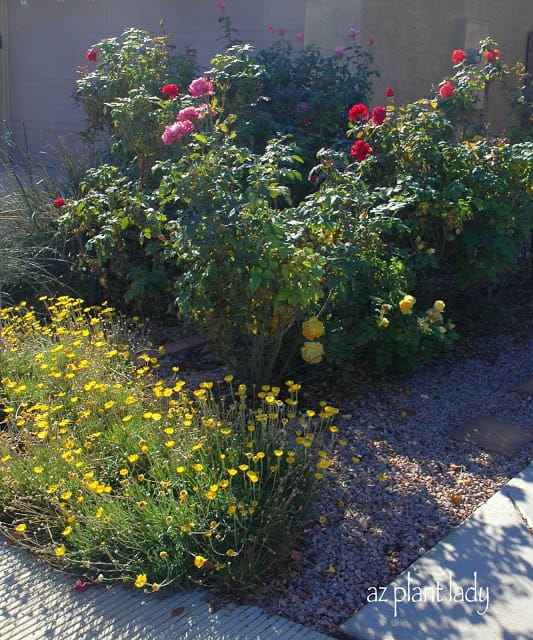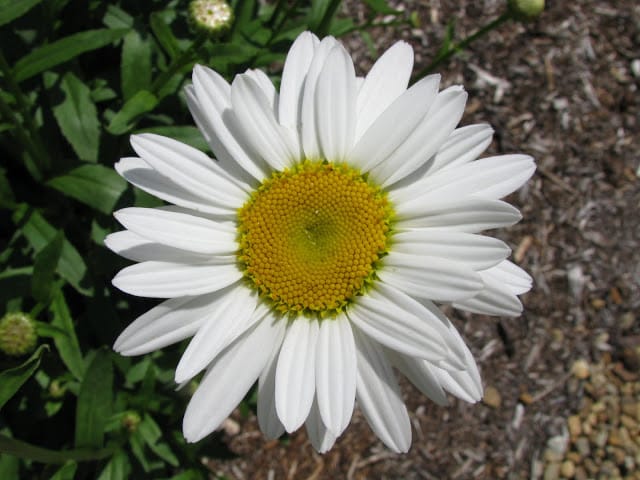I asked this question years ago, to a room full of people as I was giving my first landscape presentation. I was quite nervous as I began my presentation, but once I asked the question, “Raise your hand if you have ever killed a plant,” almost everyone raised their hands. A few people also laughed when my hand also went up and I immediately felt a little less nervous.
I think it would be very hard to find anyone who has a garden who has never killed a plant, don’t you? Over the years, I have heard many stories, some very humorous about mishaps in the garden which ended with dead plants. I would like to share mine with you….

Over 18 years ago, we moved into our new home in Phoenix. It was a small, older, ranch style house that had quite a few roses and a lot of room for a garden. I was so excited to have my own piece of land to grow plants in, I could hardly wait to get started. I sent for plant catalogs and couldn’t wait to select what I would grow.
I selected a beautiful Clematis vine and some Shasta Daisies. It seemed like it took forever for them to arrive in the mail. As soon as they arrived, I opened the box and was a little disappointed at how small the plants were. But, I planted my Clematis and Daisies and had visions of how wonderful they would look once they started flowering.

*Courtesy of Wikipedia
You may notice that the picture of the Shasta Daisy above is not mine. There is a good reason for that….I killed all of my Shasta Daisies. You see, I decided that the tiny plants that arrived in the mail needed a little help growing. So, I gave each 2″ plant a handful of lawn fertilizer.
I was sure that the added fertilizer would work miracles and I couldn’t wait to see how much faster they would grow. Well, most of you are probably already laughing at my mistake, but I was so surprised when I went out into the garden the next morning to find little brown, dried out plants. So, lesson #1 that I learned was to read the directions on the fertilizer bag and that more is definitely not better when it comes to fertilizer. I burned my little plants by adding too much fertilizer.
So, now that I learned my first lesson, I was sure to fertilize my new Clematis vine carefully.

*This is my photo, buy NOT my Clematis vine. I took this photo in a garden full of flowers in Wales.
Again, I do not have a photo of my Clematis vine flowering for one very good reason….it never flowered. It did grow foliage, but after a year, it was only about 3 ft. high and kind of sad looking. Lesson #2, just because a plant says it will grow in zone 9, does not mean that it will thrive in my desert climate. The USDA Plant Hardiness zones is based on the lowest average temperature of a given region. Phoenix is in zone 9. But, the zones do not take into account the heat of a particular area. It turns out that Clematis does not like the intense heat of our summers and as a result, mine never flowered.
And so, a recap of what I learned….
First – a tiny amount of fertilizer goes very far and amending the soil with organic matter is preferable. I now only fertilize when a plant that shows a specific nutrient deficiency (I make exceptions for citrus trees and roses, which fertilize regularly).
Second, just because a plant looks pretty in a catalog and says it grows in zone 9, it doesn’t mean that it can handle the heat of our summer. Sunset magazine has created a new hardiness zone map that factors in many different variables of a given region: low and high temperatures, humidity, soil type, length of growing season and rainfall. You can access this information, which covers all regions of the United States. *Many nurseries and those in the plant industry in the western US use the Sunset zones instead of the USDA hardiness maps since they are much more accurate.
Well, for those of you who may be new to gardening, I hope my experiences will help you so that you don’t make the same mistakes I did. Many beautiful plants are very easy to grow in our desert climate….you just have to do a little research to find out which ones.
I would like to offer one last bit of advice….wherever you live, don’t rely on the plants you see offered in the big box stores – they are notorious for selling bright, flowering plants that will soon turn brown and die after you plant them. This doesn’t mean that you have a black thumb….it means that some of the plants that they sell do not necessarily thrive in your climate.
Now, I would love to hear your stories…..have you ever killed a plant?








